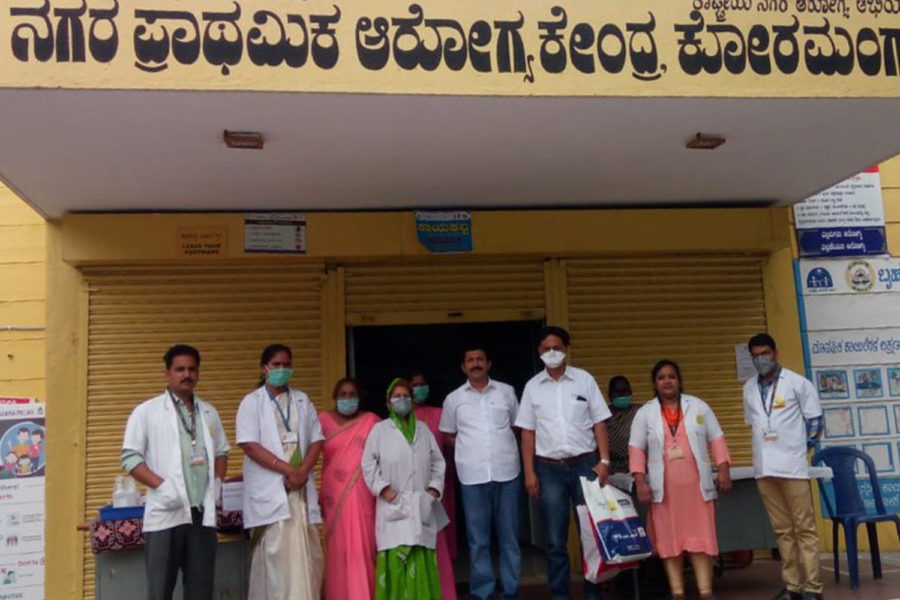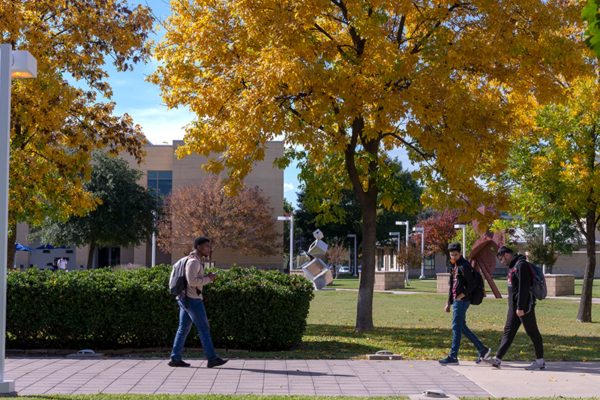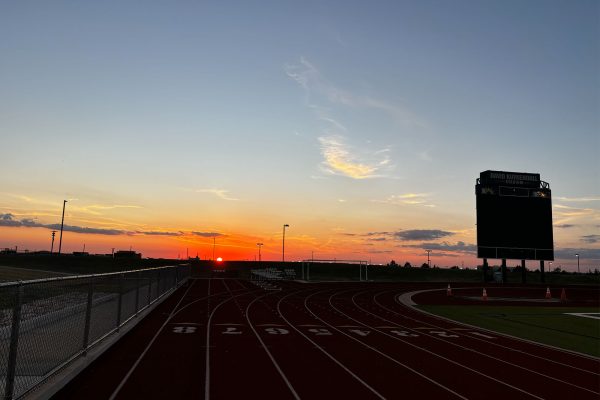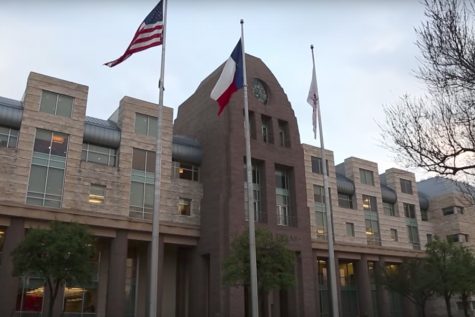As Texas opens up, the eyes of many Redhawks look to India
Trinity Care Foundation is licensed under CC BY-NC-ND 2.0
WIth an unprecedented rise of COVID cases in India over the past few weeks, many students on campus with relatives living in the country are left concerned. “Our family planned to visit our folks in India like many of my other cousins planned,” parent Sumanth Senapathi said. “Unfortunately, we all canceled ours and now hoping to see what unfolds from this near apocalypse situation in India. We don’t have any clue when we will be able to go back like before. Unfortunately, if we force ourselves then we don’t know if we’ll all be back safe.”
Sharp rise in cases.
Shortage of hospital beds and oxygen tanks.
An overloaded healthcare system with only one doctor for every 100 patients.
Countless deaths and cremations.
India, and its population of one billion, is suffering from an unprecedented rise in COVID-19 cases.
And its impact is being felt here on campus, more than 8,000 miles away, where there are hundreds of students with relatives in India.
“Our family planned to visit our folks in India like many of my other cousins planned,” parent Sumanth Senapathi said. “Unfortunately, we all canceled ours and now hoping to see what unfolds from this near apocalypse situation in India. We don’t have any clue when we will be able to go back like before. Unfortunately, if we force ourselves then we don’t know if we’ll all be back safe.”
India saw a steady drop in the number of daily cases starting June 18, 2020, with an average of 11,000 cases per day, but the start of the second wave, which began Feb. 10, didn’t see a substantial increase in the initial 10 days, but eventually rose 100,000 cases per day.
Considering that average daily infections dropped to an all-time low in January, many officials are claiming that India let its guard down by reopening all public places with several religious gatherings such as the Kumbh Mela, and election rallies being held.
“We did not anticipate a second wave but were certain that COVID was still a threat and has not been completely eradicated,” Hyderabad resident Santosh Chitla said. “However, with the reduction in cases to a minimum, we personally, same as everyone in the country, have let our guard down and our approach to take precautions of using a mask, frequency of sanitation and the social distancing. It’s not the number of cases in the country, but within the known network that hasn’t come across any cases of COVID-19 or serious complications resulting from it. We believed that we dodged the bullet here. We were very optimistic that the worst had passed us and with the vaccine in place and seeing the news where countries have started vaccinations, we were also hopeful that it is a matter of time, India would complete vaccination and we may be spared of serious consequences from the virus. The rate at which India was vaccinating its population and the rate at which we could produce the vaccines, and under the conditions of March, we did not see the threat looming over us.”
Cases in the country have surged past 20 million, and India has been reporting an average of 350,000 cases per day, with almost 10 states accounting for more than 73% of COVID-related deaths that include Maharashtra, Delhi, Uttar Pradesh, Chattisgarh, Karnataka, Punjab, Rajasthan, Haryana, Gujarat, and Jharkhand.
“In Hyderabad the situation is pathetic,” Hyderabad resident Vinod Palcharla said. “As of writing this, there are 10k+ COVID + cases. There isn’t even any sort of occupancy in hospitals because patients from other states, like Maharashtra where the situation is even worse and no beds or oxygen are not available, are being airlifted here in hyd hence reducing the already few beds left. As of now, there is no lockdown implemented but there is a night curfew from 9 pm to 6 am.”
In addition, healthcare centers are overloaded because of the increasing numbers of patients getting admitted as more than 75% of all hospital beds in major cities are occupied including ICU beds.
“In public health centers, it’s havoc,” Hyderabad resident Venkateswara Kennedy Pilla said. “I saw crowds standing in lengthy queues looking for tests and several people looking for vaccination, but vaccine stocks are non-existent. People are quarreling with health workers because the online booking of vaccination shows those Primary Health Centers(PHCs) but after coming there, no stock boards are seen everywhere. And even if there is little stock of vaccines, they are being given to second dose takers over 45 yrs age people.”
Andhra Pradesh, the 7th hardest-hit state by COVID-19 with more than 11 million infections and 9,500 deaths has seen the government put a curfew into place until the end of the month.
“I am in Tirupati, where there is a curfew so that people can only go outside from 6 to noon,” sophomore Satvik Duddukuru’s grandfather Venugopal Poola said. “Otherwise, there is no lockdown. I am staying inside all the time, and I cannot do what I want to do. Normally, I travel to my village to take care of my mango [orchard], but now I am not able to. After one or two months hopefully, it will get better.”
Even though cases have been rising in numerous parts of the country, the fact that the mortality rate has always been under control is something that junior Manas Ayyalaraju’s cousin, Pallavi Ayyalaraju thinks can help India pull itself out of the current situation.
“The numbers are more, but the mortality rate is under control, much better than what it is in the US or other European countries,” Ayyalaraju said. “With a huge population coupled with low per capita income and per capita health care facilities, India is doing a much better job. Yes, the health care system has been overwhelmed, but we will find ways to get over the problems soon.”
On the other hand, the unexpected rise in the number of cases, doesn’t matter to Chitla because of the belief that the more advanced and mutated form of the virus contributed to this.
“What has transpired in India in the last 8 weeks is unprecedented and the systems were not put for strain test a year ago unlike many parts of the world, but I feel that we have squandered an opportunity to be ready for impact in the year that passes,” Chitla said. “As in the UK and other places, the virus is mutating and becoming more infectious. The same has happened in India, mutated virus that is more virulent combined with complacency and a false sense of security of the Indian population has created this perfect storm for the unexpected rise in infections. There is enough blame to go around. Yes, it is people’s fault for letting the guard down. It is the government’s failure to squander an opportunity of preparedness that they had during last year and strengthen it further to be prepared for inevitable. They did not see it coming and with such a force.”
Several states have also been reporting a shortage of beds with many people dying on the spot without being able to receive treatment. An effort to build beds in locations such as hotels and stadiums is underway but hasn’t proven to be effective in dealing with the rising number of daily infections.
“I don’t think India will come out of the 2nd wave any time before the end of this year because it took India almost a year to recover from the 1st wave,” Hyderabad resident Neerja Venkat said. “India is one of the biggest manufacturers of covid vaccines (Covaxin and Covishield) Even with that we are still facing a shortage of vaccines. Not only vaccines but also oxygen and hospital beds. Most of the people who are dying are not because of covid but due to lack of medical facilities which is devastating. There is no supply to start with so the sudden demand in the country is not getting fulfilled.”
Chitla, however, believes that the current state of the healthcare system is bound to collapse even further if at all India can’t pull itself out of the 2nd wave.
“India will have to pull itself out much before the year-end,” Chitla said. “I don’t think we have resources to struggle for another 6-7 months with such intensity. The impact would be great and the loss of life would be staggering. The frontline workers will not be able to handle such a load for such a long time. Things should improve within the next two or three months from the current situation, but would still have localized problems for the rest of the year is my guess.”
Although the Serum Institute of India is the world’s biggest vaccine manufacturer, the vaccination drive which began in early January is crumbling because of the shortage of vaccines. Only 2.85% of the population is completely vaccinated, but increasing numbers of people are being turned away from vaccination centers because the shots are out of stock
“I have received the COVISHIELD vaccine, both doses,” Ayyalaraju said. “India has vaccinated 130 million people with the first dose and 30 million with the second dose. That’s more the individual populations of 60% of the countries in the world. A country of 1.3 billion people, with so much diversity, has its share of problems and dynamics which are beyond the comprehension of many countries and media houses worldwide.”
For others, there was an increased amount of struggle that had to be endured to be able to receive the vaccine.
“I have received the COVISHIELD vaccine on 30th April, but I struggled a lot to get vaccinated,” Palcharla said. “Whenever I booked an appointment on the official app, I got a call from the hospital after a few hours saying it got canceled because there weren’t any stocks. I had to book more than five times and only after that I received the vaccine.”
Even though the situation has impacted Pradeep Narendran, father of sophomore Akash Pradeep on a personal level, there’s still a belief that India will be able to get things under control before the end of the year.
“One of my coworkers working at JPMC Bangalore, who was only in his 20s passed away,” Narendran said. “This was a bit shocking and saddens me, but thankfully our parents are all fully vaccinated. I’m optimistic by nature, and India can hold up to difficult situations. After all, they vaccinated 182 million of which 40.4 million are fully vaccinated! Yes, it is true that even though that’s a huge number, it’s only 3% of India’s total population. But India being the pharmacy of the world has the infrastructure to ramp up and yet we need to be cognizant that these things take time. After all, Rome wasn’t built in a day! The good news is that because India proactively helped many countries in their time of need by supplying vaccines and medicines, the entire world is now helping India. I’m not sure if it’s realistic to say things will be in control within a year but I’m optimistic that it’s doable.”
For Pankaj Gupta, father of sophomore Ishayu Gupta, there wasn’t too much hope that everything was on the right track before the start of the 2nd wave but believes that donations can go a long way in helping those affected.
“First of all, nobody knows what is the right track,” Gupta said. “I’m not a big believer in what is shown/published in the media. On the contrary, hope is always there as people have now learned how to fight with situations or adapt to these kinds of situations. What makes them strong is the realization of their potential as human beings. Donations will help as long as it lands in the right hands. In addition to financial aid, the situation demands more volunteers and emotional support from others.”
Although Narendran strongly believes that there can’t be a substitution for the countless deaths, he still has made numerous efforts towards improving the situation for many people.
“There is no replacement for lost lives and physical afflictions, but I had donated a decent sum (some of it was from collection from other well-wishers) to feed an entire ward in a district in Coimbatore, a city in Tamil Nadu, a southern Indian state during the first wave,” Narendran said. “A few days back I organized a relief fund through our family temple in Kerala (another southern Indian state) to deliver food and masks to a tribal village in Maharashtra (a west Indian state).”
The situation, on the other hand, hasn’t impacted Ayyalaraju on a personal level but has made her stronger.
“The situation has not impacted me personally except for small sacrifices,” Ayyalaraju said. “But there are some industries like hospitality, manufacturing, unorganized sector, food processing, etc… Which are badly impacted. The government is taking adequate measures to mitigate their hardships. If at all this situation impacted me and fellow Indians more, it has made us more resolute and goal-oriented to strive and emerge victorious from this situation, and we will come out stronger.”
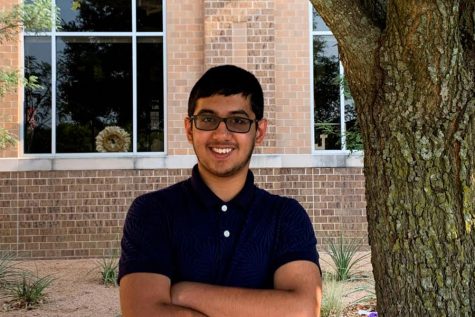
Shreyas Viswanathan is entering his first year of wingspan as a sophomore. During his free time, he mostly plays chess, video games and tries to keep finding...




